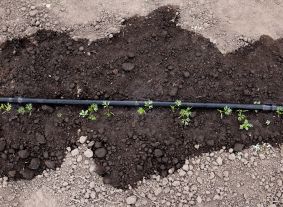How to Clean Pruners
Views: 3284

Tool maintenance is not my forte. Most of mine end up rusted. I feel bad about it, but with trowels and garden rakes, as long as the tool remains strong, the functionality is still there. There are no moving parts on a trowel, so it’s all good.
What’s not good is when clippers or pruners or shears get rusty. Worse yet is a build-up of sap, dirt, plant debris, and all manner of gunk. All that stuff gets into the crevices and slows down the tool’s moving parts. How annoying is it when you close in on a twig or leaf with your clipper and the handles just stick there?
A good set of pruners
I was given a set of titanium bypass hand pruners to test from Centurion. A good pair of pruners is rare for me. I typically buy cheap, knowing I’ll not care properly for them. But this pair of pruners has everything that makes a great pruner: It has a nice sharp blade, smooth anvil action that is quite powerful, and a comfortable (read: not too cushy but firm) grip. My one negative comment is I feel they are a bit too big for my hand. But I’ve learned to work around that with most other things in life.
I’ve used these pruners to do all sorts of things this year. Cutting twigs and small branches, clipping off leaves, cutting bamboo stakes, chopping down large weeds, cutting through some rotting squash vines, and even opening up a mushy melon. These things are dirty and they’ve started to stick: When I clamp down on something, I must physically pull the two grips apart. Not. Good.
Step-by-step instructions for cleaning
I need to clean these pruners. Whats the best way to do it? I went straight to the company to find out. Here’s what they said to do, and I’m doing it right now as I type this:
1. Fill a bucket with warm soapy water
2. Soak the pruners in the soapy solution for several minutes to loosen dirt and any sappy build-up. And boy, do I have build-up.
3. Scrub away the debris with a stiff scrub brush. In my case, I’m using an old toothbrushwhich, I have to say, is one of the most versatile tools in the world. I’m also using a Brillo pad to really scrub down the flat side of the blades (not the steel wool kind, the more plasticky kind of Brillo).
4. Wipe the pruners dry with a clean towel, and pay particular attention to the joints and crevices where stuff might be hiding. I’m going to get in there with a Q-tip, too, just to be sure.
5. Liberally apply a lubricant such as WD-40 to the blade surface and in all the moving parts of the pruner.
Okay, the process is complete. Took me all of 15 minutes from filling the bucket with soapy water to lubricating. Really quick, really simple, and the pruners are now really clean. I have to do this more often!
Meet Ellen Wells
When you’re raised on a farm, you can’t help but know a thing or two about gardening. Ellen Wells is our expert on edible gardening.…
Ellen's Recent Posts

Asparagus






